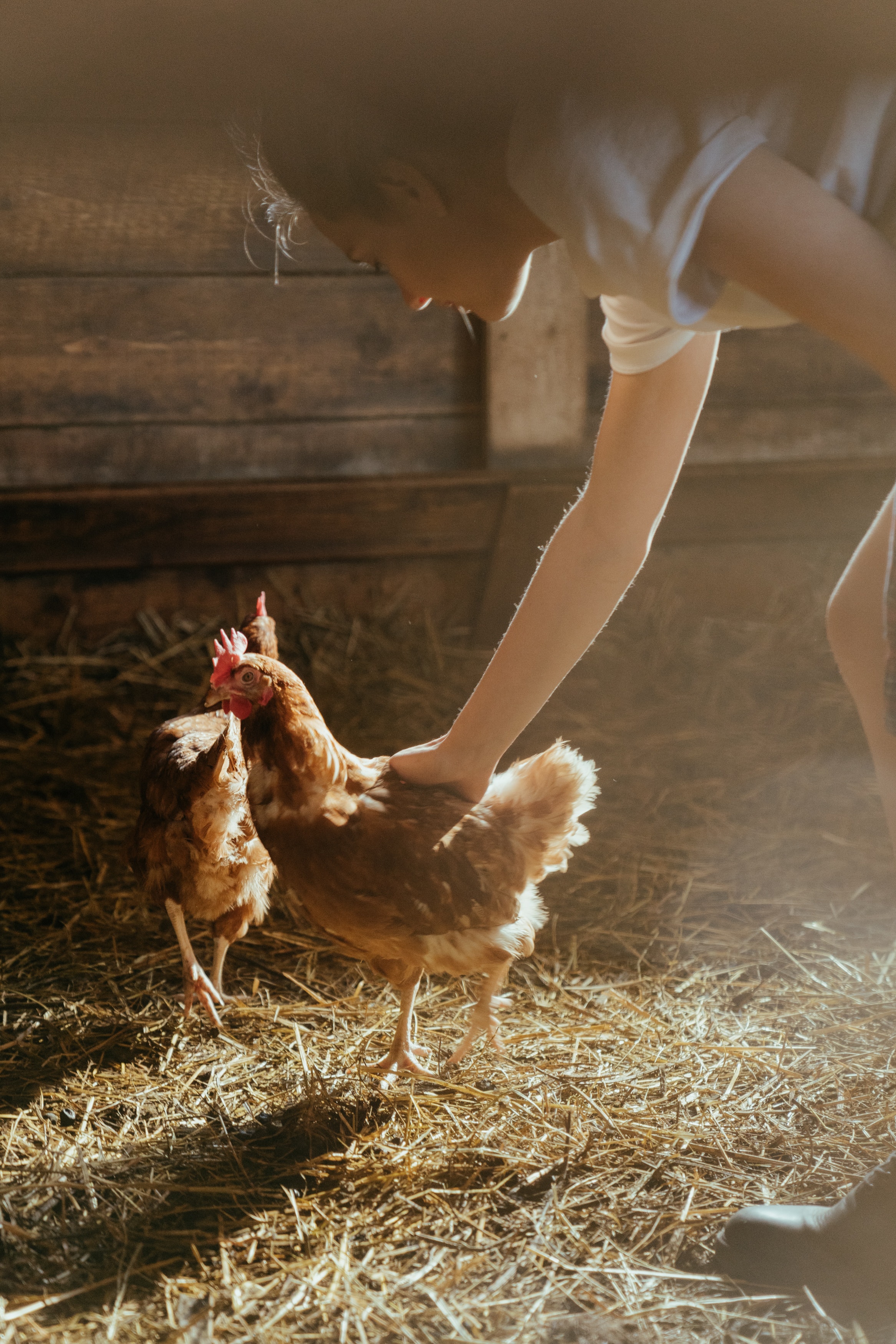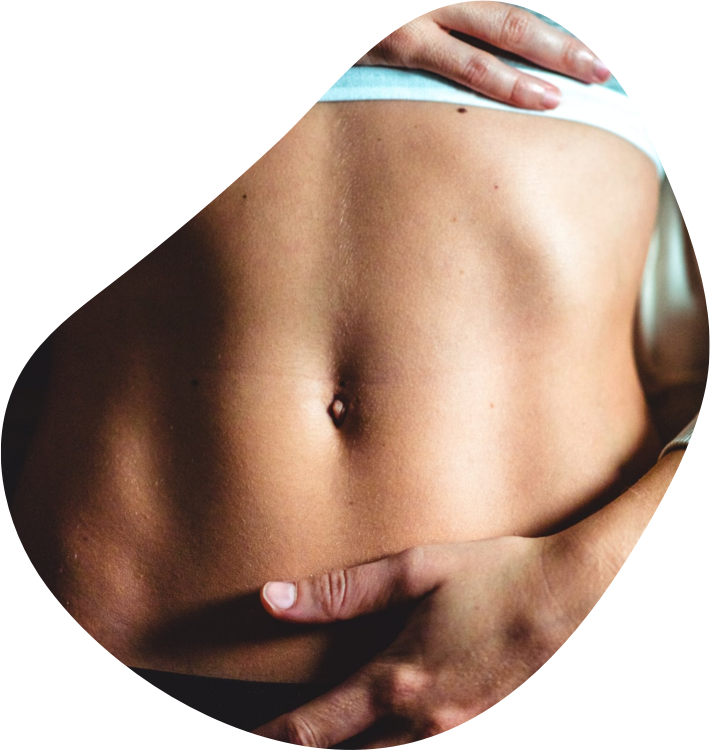You’re in the meat department looking for something for dinner. You see labels claiming to be free range, bred-free range, organic or grain fed. What does organic-eggsit all mean? You’d be shocked to learn that free range may not necessarily mean that animals are kept in roomy, free-to-range conditions. Or that bred free range is means born outside and transferred to a factory farm. Eggs are just as confusing – cage-free, barn laid, free-range, organic – what is best? This article will help to de-bunk some myths around these loose labeling terms and help you make informed choices when buying animal foods. Studies show that consumers are wanting to make informed choices about where their food is coming from. Most people are now aware of factory farming practices and are leaning towards products that are free range and humanely raised.
The problem lies that in Australia terms such as free range, barn laid and cage free are not regulated. There is a lot of variation in the use of these terms and there is no set regulation in place to ensure that there is transparency as to what you are actually getting. Thankfully in Australia beef cattle are mostly free range, although grain fed beef will be finished in feedlots. Lamb is also mostly free ranged in Australia, so we will focus this article on eggs, meat chickens and pork. We will also go into some detail on what grain fed really means.
By definition, free range implies that the animal has been raised in an open environment with room to move around. Unfortunately many of the eggs we buy as free range are from chickens that do not fit this definition.
Largely to blame is the voluntary free-range accreditation scheme of the Australian Egg Corporation, who have a vastly different definition of free-range than the definition endorsed by the Free Range Egg and Poultry Association of Australia. Lack of regulation makes it difficult for you to know how free-range your eggs really are.
According to the Australian Egg Corporation, free-range indicates:
- Hens are housed in sheds with access to an outdoor range
- Stocking capacity within sheds can’t exceed 14 birds / m2
- Maximum of 1500 birds / hectare
Beak trimming is permitted
The Free Range Egg and Poultry Association of Australia definition indicates:
- Unrestricted access to free-range during daylight hours
- Stocking capacity within sheds can’t exceed 7 birds / m2
- Maximum of 750 birds / hectare
- Beak trimming is not permitted
As you can see the standards are vastly different. Although free-range eggs produced by the Australian egg corporation standards are better than cage eggs, these bird are still de-beaked (which means that they can’t peck the ground or groom) and are extremely overcrowded. To keep up with the demand of the free-range egg market increasing most commercial suppliers use these watered down guidelines to sell their eggs as free-range.
The free-range egg and poultry association uses the logo above – so look for it when buying supposedly free-range eggs.
Cage eggs
Cage eggs are termed as such because the chckens are housed in small confined cages where they have access to food and water but no room to flap their wings or move around much. The cage egg industry is a classic example of factory farming where the only real consideration is the number of eggs per dollar at the end of the day. Cage eggs have less nutritional value as the diet of caged birds contains no fresh food or grass.
Barn laid eggs
Barn laid eggs are eggs that are laid by hens housed indoors, but not in the conventional caged systems.
Barn laid hens:
- Have restricted space to flap their wings
- Are still kept at quite a high density
- Are usually debeaked
- Have nest boxes to lay their eggs
RSPCA approved barn laid eggs also have the following requirements:
Hens are not debeaked
- Stocking density must be no more that 9 birds per m2
- Adequate perches and nest boxes must be provided
- Barn laid is certainly better than cage eggs, however hens still are unable to forage, scratch and peck as they do in a free-range system.
Certified Organic Eggs
Besides having eggs from your own chickens, certified organic eggs are the best option. Certified organic eggs are always free range and are free from hormones and antibiotics. Chickens are fed certified organic feed and have access to pasture.
In certified organic laying hens:
- Permanent access to weatherproof housing with sufficient perches to enable normal roosting for birds
Stocking capacity cannot exceed 16kg per m2 - If artificial lighting is used to supplement daylight the total must not exceed 16 hours per day
- The use of growth promotants and hormones is prohibited
- Debeaking is not allowed
- Farm must adhere to organic farming principles and restrictions
- There are several certifying bodies that govern organic eggs – so look out for their certification logos below on the carton.
Australia processes more than 470 million broiler chickens (meat chickens) raised in intensive farming operations each year. The majority of chicken you meat chicken farmbuy in supermarkets and restaurants are supplied from these operations, and to keep pace with the demand, they are raised in increasingly confined and crowded environments. Antibiotics are administered as therapeutic agents to treat bacterial infections that arise from infections that spread in these conditions such as E. coli, salmonella and enterococci.
They are also used prophylactically to stop the spread of disease from sick chickens, often used in chickens that are not showing any signs or symptoms of illness. Antibiotics are given either directly (intramuscularly) or indirectly through feed and water, with low doses continually administered during their growth cycle. While not claimed to be used specifically as growth promoters, antibiotics incidentally maximise chicken growth by reducing the incidence of growth-inhibiting bacterial infections.
Chickens in these types of factory farms have no access to daylight, no room to flap their wings and are routinely de-beaked to stop them from pecking one another (a pastime of bored chickens). Because they are fed processed feeds and do not have access to pasture where they would normally eat grass and any insects found, they are much lower in nutrition than a free-ranged chicken. Chickens in these types of farms, termed ‘battery chickens’, grow three times as fast as a normal chicken and have health problems associated with this.
Free-range broiler hens must meet the following criteria:
- Hens must have unrestricted access to outdoors during daylight hours
- Maximum stocking density of 15kg/m2 of area indoors
- Maximum amount of hens 750 per hectare of outdoor space
- Must contain sufficient perches to allow normal roosting for all birds
- Debeaking is not allowed
- The use of growth promotants and hormones are not permitted
Although these are the guidelines set by the free range farmers association, free range chickens can be found in densities of up to 2500 chickens per hectare, which is over three times the recommended amount for free ranging birds. Look for certified free-range poultry or buy organic to be certain about their conditions.
Pig farming – pork, bacon and ham
Australian pig farming practices have recently begun to come under the same scrutiny of chicken farming practices and with good reason. In Australia, 9 out of 10 pigs are raised in factory farming conditions. Pigs are intelligent and social animals, so the conditions in factory farming are particularly bad for these animals.
Factory Farming
Although confronting, it should be known that if you are eating standard pork, bacon and ham products you buy from the supermarket or at a restaurant this is how the animals are kept prior to processing.
Sows (mother pigs) are kept in stalls that are so small that they cannot even turn around. They give birth on a concrete or mesh floor and a wire cage separates their piglets from them.
This is the closest contact that they will have. Shortly they will be transferred into their own stalls to grow for the next 4 months before processing. They will never see the daylight, interact with other animals or be able to move freely. They are fed a high calorie grain based feed that usually includes growth-promoting drugs. Once the mother pig has weaned her piglets she is impregnated again to complete the cycle once again.
The pig farmers association of Australia claim that they are moving away from sow stalls, however this is also misleading as they plan to use farrowing crates instead (see right), which as similar in function. Coles supermarket announced this year that all of their coles brand meat would be sow stall free, which although is not the same as free range it is a step in the right direction.
Free-range pigs
There is a lot of confusion about the term free-range when it comes to pig products. Lack of labelling laws means that anyonecan use the term free-range even if the pigs are raised intenstively. Look for the humane certified logo on the left – which indicates the farmer is following their guidelines.
True free-range pork and small goods are produced from pigs that meet the following criteria:
- Pigs have access to large areas of land to forage, dig and eat weeds and pasture
- Sow stalls and farrows are not allowed
- Tail or teeth clipping is not allowed
- They must grow at a natural pace unaided by hormones or growth promotants
You might have noticed the emergence of Bred Free Range products on your supermarket shelves. This is a misleading term which makes a lot of consumers mistakenly think means that they are buying free range meat. Bred free range actually means that the pigs are bred in a free-range environment but are transferred inside once born. Most of these pigs are transferred into a factory-farming environment, although some may be transferred into ‘eco-shelters’, which are large indoor sheds with straw bedding. Unfortunately, due to insufficient labeling laws producers that are bred free range can incorrectly label their products as free range. Producers that have been known to do this include Bangalow sweet pork, Bundawarrah Free Range Pork and Gooralie Free Range Pork.
Which pork is best?
Organic pork is best as it guarentees that it will always be free range, although it can be very difficult to get a hold of. Pork that is certified by the RSPCA may be bred free range but at least once they are transferred indoors the conditions will be better than factory farmed animals as they will be able to move around and interact with one another. Pork which carries the humane choice free-range logo will be also be truly free range.
Antibiotic use in livestock
A swathe of antibiotics are being used in commercial meat production in Australia. Each year, Australia imports around 700 tonnes of antibiotics, two thirds of which are for vetinary use – the majority being used in meat and livestock for therapy, disease prevention, growth promotion and disease control. These can be administered via injection or orally for disease control in individuals, but more commonly they are used as a feed or water additive to prevent disease and to promote growth in some animals. The pig industry in Australia alone uses over 200 different varieties of medications. As well as in pigs, antibiotics are used in beef cattle, dairy cattle, sheep and meat chicken production. Antibiotics in egg producing birds are not used as widely due to the fact that there needs to be a washout period where the eggs are unfit for sale. This would hinder production and cause many eggs to be unfit for sale.
Paylean – a controversial drug used in piggeries
Ractopamine hydrochloride (Paylean) is a drug that is commonly used as a feed additive in Australian intensive piggeries. Ractopamine is classed as a beta adrenoceptor agonist and a phenethanolamine salt. It promotes leanness in pigs, resulting in dramatic muscle growth. Paylean works by directing nutrients away from the production of fat deposits towards the production of lean meat. It increases the rate of weight gain in pigs by 10%, feed efficiency by 13%, and carcass leanness by 25% – 37%. It also reduces the average daily feed intake by 6%. The end result is that, with the use of ractopamine, the average producer can earn an extra $5 to $10 per hog. The use of ractopamine has been banned in food-producing animals in China, Taiwan and Malaysia. The use of beta agonists has been banned in the European Union since 1996.
In an internationally peer reviewed paper on ractopamine, which included an assessment of observations in humans, ractopamine showed cardiovascular effects resulting from it’s use in humans. These included tachycardia, vasodilation, skeletal muscle tremor, nervousness, and metabolic disturbances, in addition to airway hyper-responsiveness and increased airway inflammation. It was also found that people with an underlying coronary artery disease or pre-existing arrhythmias were at an increased risk of tachycardia, decreased blood pressure and cardiac palpitations. Other clinical trials on humans found behavioral side effects including restlessness, apprehension and anxiety in those that took ractopamine.
In China, pork containing paylean is considered toxic and harmful. There is a ban on pork produced with ractopamine and cases where it has been detected in pork have resulted in multiple arrests and prosecution. In 2007, China blocked pork shipments from the US because traces of ractopamine were found. A Chinese representative has said, “China does not share the US view that the substance is a safe product.” In Malaysia, where the use of paylean has been banned since 2002, the government monitors the food given to pigs, and farms found to use paylean are fined and/or sentenced to two years in prison. Ractopamine is also banned in Taiwan, where pork products are often screened for it.
It can therefore be said that the use of Paylean poses considerable health risks. Although most other drug have a washout period of up to two weeks prior to slaughter, there is no such restriction for paylean and it can be used right up until the animal is killed. It takes a full seven days for 97% of paylean to be excreted following a one time dose, so it can be concluded that pork, ham and bacon produced using factory farming techniques including paylean administration will contain some level of this drug.
Grain fed beef is very popular and if often a way which a meat is promoted as being good quality. Grain fed beef often tastes better – but this is due to the fact that cattle that eat grain based diets put on more fat – resulting in marbling of the meat and a more tender cut.
Grains are not the natural diet of cows and grain fed beef have many problems. Grain fed beef is quite unhealthy both due to the fact that the cows have a poor fatty acid balance, are metabolically imbalanced and that they lead a sedentary end of their life, confined to feed lots.
cow’s feedlot
Most grain fed cows start off as grass fed and get transferred to feed lots for a set number of days before slaughter. The conditions in these feed lots can sometimes be crowded and filthy.
Grass fed beef however can be quite a healthy option (particularly if organic), having a good fatty acid balance and leaner meat which is normal in makeup.
Certified organic farming
Organic animal food – whether eggs, meat or dairy must be produced in a natural, free-range setting. Organic animals are fed an organic diet (or feed on organic pasture) that has no pesticides, herbicides or additives. Antibiotics are not allowed in organic farming systems, nor are other pharmaceutical drugs. Although more expensive than your conventional eggs and meat, you can be sure that if you are buying certified organic your product will be free-range and free from antibiotics.
In summary
If you’re new to the information in this article you’re no doubt feeling overwhelmed about where to start. To make informed choices you need to look closely at labels and perhaps even do a Google search on the company selling to determine whether they are actually produced free-range.
Although it can cost more to eat free-range or organic products, remember that you’re paying for increased costs for things like the larger land space required, better food and better living conditions for the animals which results in a better product.
Here’s a summary of what to look out for when buying animal products:
Eggs
- Buy free-range – look for the certified Free Range or a Certified Organic Logo
- Organic is always the best option
Chicken Meat
- If buying free range look for the certification labels
- Organic is best as it will be free from antibiotics
Pork, ham and bacon
- Buy only certified free-range pork, which is better for your health and for the animals
- Avoid bred-free range as pigs are still raised intensively
- Organic pork is best if available
Beef
- Avoid buying grain fed beef, which is bad for your health
- Ask for grass fed beef
- Organic is best to avoid residual antibiotics in meat
Lamb
- Lamb is generally free-range in Australia
- Organic lamb guarantees to be free of residual hormones and other chemicals



